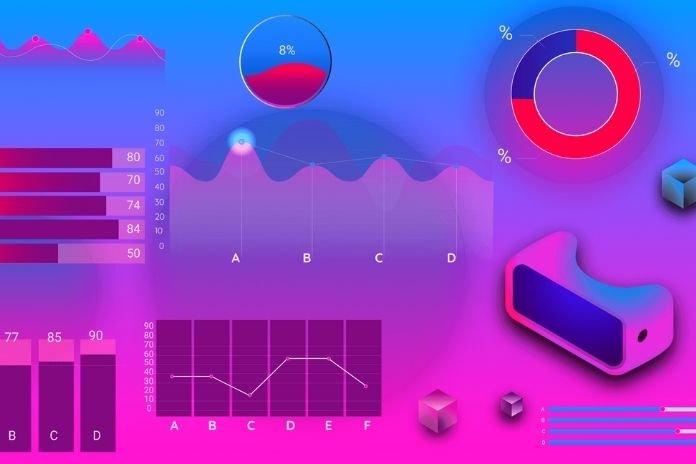Virtual Reality: Concept And Learn How To Use It In Your Company
For a long time, Virtual Reality (VR) was used to describe a futuristic scenario in movies and books and the Internet of Things and its smart devices.
However, the truth is that the forms of application of this resource are vast and diverse, being able to serve both recreational purposes, like those of the final consumer and business. One of the great highlights of VR, an acronym for Virtual Reality, as the concept is called in English, is the immersion provided when using it. Such a capability, if used creatively, can revolutionize the consumer experience. Thus, it is an essential tool in the sale of solutions, services, and machines, for example, and it already appears in business fairs as the decoy of the stands.
Currently, many brands benefit from this application, mainly in the Retail, Education, Health, Entertainment, and Logistics sectors. In addition, with the arrival of 5G, which brings more speed and stability to connectivity, the technology should become increasingly popular.
Virtual And Augmented Reality: What Are The Differences?
New ways to communicate, entertain, train and study will explore using these technologies, but there is still a vast field of opportunities. However, it is essential to understand that both start from different concepts to apply the ideal resource to new ideas.
Virtual Reality
Virtual Reality (VR) has become known worldwide, especially for its entry into the gaming industry. That’s because it offers an entirely different experience from what we see. Through this tool, the player can enter the game scenario.
In other words, there is a fully digital environment in which the user will insert with the help of glasses and other equipment in virtual reality. VR offers a 360º and three-dimensional view and allows interactions from the user’s hand. In this way, the boundaries between the real and the digital world are almost invisible. The applications of this resource go far beyond the universe of electronic games, use for training, simulations, and the presentation of prototypes.
Augmented Reality
Unlike what happens with VR, Augmented Reality (AR) does not take the user to another dimension but brings virtual elements to a natural environment. Naturally, the application also gained prominence with games, especially on mobile, but it quickly expanded to other horizons.
As is the case with virtual reality, augmented reality is already present in digital sales channels. Using it and the smartphone’s camera, it is possible to test how a piece of furniture will fit in a particular room, if a shoe matches a specific look, and much more.
In practice, it is a resource that takes the most significant advantage of face-to-face commerce to online stores: the possibility of checking the product, even if in a computerized projection, and guaranteeing whether or not it will meet expectations. As a result, consumers feel more confident in buying online and have greater satisfaction with the product, reducing exchanges and returns.
Finally, there is still the option to combine both trends, called Mixed Reality ( MR). As you can imagine, the technique combines real and virtual elements, but with the differential of creating a unique experience between both. Thus, both MR and RA have been beneficial and popular in healthcare as they support surgery and other procedures.
Scenario And Prediction Of Immersive Experiences
Connectivity is the foundation of most innovations, including immersive tools. Thus, it is a consensus that the arrival of 5G technology will significantly impact the ICT sector – Information and Communication Technologies. This is because, with a faster and more stable connection, which supports a greater volume of data traffic, it becomes even more advantageous to adopt innovative solutions such as these.
How Technology Is Being Used
Like many other scanning tools, Virtual Reality gained prominence during the pandemic, as it offers a way to consume content without leaving home.
Places open to visitors, for example, could benefit from technology by creating a simulated tour of their facilities. Cafes, restaurants, hotels, museums, and parks took advantage of this deception. This is a means of engaging the public and encouraging them to visit the place in person in the future.
Real Estate
Nowadays, just looking at a floor plan or even photos of projections of an apartment may not be enough to convince a more demanding client. Therefore, some construction companies are already adopting VR glasses so that it is possible to visit the environment more realistically.
Health
Immersive technology has been a great ally in medicine. VR will use as support during surgical procedures, providing information about the patient in real-time and training the medical staff with simulations of different scenarios.
Corporate
In this context, managers can even apply it to bring teams together and ensure a sense of belonging in the new hybrid or remote work scenario. A good example is the training of employees remotely, which done by simulating a natural environment during a video conference.
Education
Teaching models needs constantly update to maintain student interest and engagement, and one of the ways to do that is to bring new ways to present content. Thus, the student can visit historical scenarios and get to know geographical features up close, not to mention the possibility of learning physics, chemistry, and mathematics with the support of playful elements.
Also Read: AI In Medium-Sized Companies
Share this content:












Post Comment